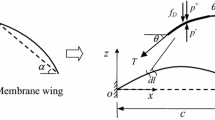Abstract
Nonlinear behavior of flexible offshore structures governed by Morison's equation is studied in frequency domain through an application of higher order transfer functions. Nonlinearities included in the analysis are the drag nonlinearity considering relative velocity between wave and a structure and the additional effect of current. Nonlinearity in the equation of motion of the syste em is expanded in polynomial series by using statistical method, the polynomially expanded equation converted to sequentially ordered differential equations using Volterra series and the nonlinear transfer functions acquired by transforming these equations to fequency domain. The characteristics of the nonlinear transfer function models are investigated through the analysis of the nonlinear re sponse of SDOF system subject to harmonic wave input. The response spectrum analysis is also performed using the 3rd, 5th and modified 3rd order transfer function model and the reliability of the modified 3rd order model proposed in this study is presented through numerical examples.
Similar content being viewed by others
References
Ahmed, S. (1996). “Stochastic TLP response under long crested random sea.”Computers and structures, vol. 61, No. 6, pp. 975–993.
Bedrosian, E. and Rice, S.O. (1971). “The output properties of Volterra systems (nonlinear systems with memory) driven by harmonic and Gaussian inputs.” Proceedings of the IEEE, Vol. 59, No. 12, pp. 1688–1707.
Borgman, L. E. (1969). “Ocean wave simulation for engineering design.”Journal of Waterways and Harbors Division, ASCE, WW4, 95, pp. 557–583.
Chakrabarti, S. K. (1990).Nonlinear methods in offshore engineering. Elsevier, Amsterdam, The Netherlands.
Eatock Taylor, R., and Rajagopalan, A. (1981).Superharmonic resonance effets in drag dominated structures, Integrity of Offshore Structures, Applied Sci Publishers, London and New Jersey.
Faltinsen, O., Newman, J. N. and Vinje, T. (1995). “Nonlinear wave loads on a slender vertical cylinder.”J. Fluid Mech., Vol. 289, pp. 179–198.
Im, S. B. and Powers, E. J. (1996). “A sparse third-order orthogonal frequency domain Volterra-like model.”Journal of Franklin Institute, Vol. 333(B), No. 3, pp. 385–412.
Johnson, P., Mekha, B. B. and Roesset, J. M. (1993). “Simplified modeling for the nonlinear response of tension leg platforms.”Proceedings of the 3rd International Offshore and Polar Engineering Conference, pp. 6–11.
Kim, K. I., Powers, E. J., Ritz, C. P., Miksad, R. W., Fischer, F. J. (1987). “Modeling of the nonlinear drift oscillations of moored vessels subjected to non-gaussian random sea-wave excitation.”IEEE Journal of Oceanic Engineering, Vol. OE-12, No. 4, pp. 568–575.
Kim, M. H. and Yue, D. K. P. (1989). “The complete second-order diffraction solution for an axisymmetric body. Part 1: Monochromatic incident waves,”J. Fluid Mech., Vol. 200, pp. 557–593.
Kim, M. H., Celebi, M. S. and Kim, D. J. (1998). “Fully nonlinear interactions of waves with a three-dimensional body in uniform currents.”Applied Ocean Research, Vol. 20, No. 5, pp. 309–321.
Kim, S. B., Powers, E. J., Miksad, R. W., Fischer, F. J., Hong, J. Y. (1989). “Spectral decomposition of nonlinear TLP Sway response to non-gaussian irregular seas.”Proceedings of the 21st Annual Offshore Technology Conference, OTC 6134, Houston, Tx, pp. 123–128.
Mekha, B. B., Johnson, P. and Roesset, J. M. (1994). “Effects of different wave free surface approximations on the response of a TLP in deep water.”Proceedings of the 4th International Offshore and Polar Engineering Conference, Vol. 3, pp. 462–469.
Paik, I., Mekha, B. B., Powers, E. J. and Roesset, J. M. (1995). “Interpretation of nonlinear effects on the dynamic response of a TLP.”Proceedings of 1995 OMAE, Offshore Technology, ASME, pp. 199–206.
Paik, I., and Roesset, J. M. (1996). “Use of quadratic transfer functions to predict response of tension leg platforms.”Journal of Engineering Mechanics, ASCE, Vol. 122, No. 9, pp. 882–889.
Schetzen, M. (1980).The Volterra and Wiener Theories of Nonlinear Systems, John Wiley, New York.
Spanos, P. D. and Donley, M. G. (1991). “Equivalent statistical quadratization for nonlinear systems.”Journal of Engineering Mechanics, ASCE, Vol. 117, No. 6, pp. 1289–1310.
Sibetheros, I. A., Rijken, O. R. and Niedzwecki, J. M. (2000). “Volterra series-based system analysis of random wave interaction with a horizontal cylinder.”Ocean Engineering, Vol. 27, pp. 241–270.
Author information
Authors and Affiliations
Corresponding author
Rights and permissions
About this article
Cite this article
Kwon, J.S., Paik, I.Y. & Chang, S.P. Nonlinear frequency domain analysis of flexible offshore structures using volterra series. KSCE J Civ Eng 9, 391–401 (2005). https://doi.org/10.1007/BF02830630
Received:
Accepted:
Issue Date:
DOI: https://doi.org/10.1007/BF02830630




